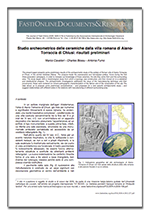 M. Cavalieri, A. Fumo, C. Bossu, 2012. Studio archeometrico delle ceramiche dalla villa romana di Aiano-Torraccia di Chiusi: risultati preliminari. FOLD&R 257. [en italien]
M. Cavalieri, A. Fumo, C. Bossu, 2012. Studio archeometrico delle ceramiche dalla villa romana di Aiano-Torraccia di Chiusi: risultati preliminari. FOLD&R 257. [en italien]
PDF ici

Villa romaine d'Aiano-Torraccia di Chiusi
Une villa de l'Antiquité tardive au coeur de la Toscane
 M. Cavalieri, A. Fumo, C. Bossu, 2012. Studio archeometrico delle ceramiche dalla villa romana di Aiano-Torraccia di Chiusi: risultati preliminari. FOLD&R 257. [en italien]
M. Cavalieri, A. Fumo, C. Bossu, 2012. Studio archeometrico delle ceramiche dalla villa romana di Aiano-Torraccia di Chiusi: risultati preliminari. FOLD&R 257. [en italien]
PDF ici
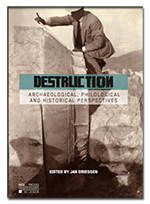 M. Cavalieri, Destruction, transformation et refonctionnalisation. Le passage de l’Antiquité au Moyen-âge en Toscane entre les IVe et VIIe s. p.C.n. dans J. Driessen (ed.), Destruction. Archaeological, philological and historical perspectives, Louvain, 2013.
M. Cavalieri, Destruction, transformation et refonctionnalisation. Le passage de l’Antiquité au Moyen-âge en Toscane entre les IVe et VIIe s. p.C.n. dans J. Driessen (ed.), Destruction. Archaeological, philological and historical perspectives, Louvain, 2013.
Publication de la contribution de M. Cavalieri au colloque « Destruction. Archaeological, philological and historical perspectives » qui s’est tenu à Louvain-la-Neuve du 24 au 26 novembre 2011.
Le podcast de la conférence est toujours accessible.
L’ouvrage peut être commandé aux Presses Universitaires de Louvain.
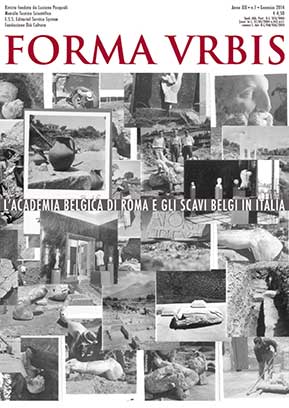 Dans le numéro de janvier de la revue italienne « Forma Urbis », consacré à l’Academia Belgica et aux fouilles belges en Italie, vous trouverez un article sur les fouilles à Aiano-Torraccia di Chiusi, ainsi que celles de Cures Sabini (les deux projets dirigés par M. Cavalieri et animés par le même groupe de recherche). En cliquant sur la couverture, vous aurez accès au sommaire du numéro et à la première page de l’article.
Dans le numéro de janvier de la revue italienne « Forma Urbis », consacré à l’Academia Belgica et aux fouilles belges en Italie, vous trouverez un article sur les fouilles à Aiano-Torraccia di Chiusi, ainsi que celles de Cures Sabini (les deux projets dirigés par M. Cavalieri et animés par le même groupe de recherche). En cliquant sur la couverture, vous aurez accès au sommaire du numéro et à la première page de l’article.
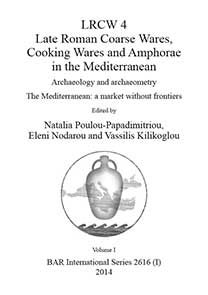 THE AMPHORAE IN THE ROMAN VILLA AT AIANO-TORRACCIA CHIUSI (SAN GIMIGNANO, SIENA-ITALY)
THE AMPHORAE IN THE ROMAN VILLA AT AIANO-TORRACCIA CHIUSI (SAN GIMIGNANO, SIENA-ITALY)
in LRCW 4. Late Roman Coarse Wares, Cooking Wares and Amphorae in the Mediterranean Archaeology and archaeometryThe Mediterranean: a market without frontiers. Edited by Natalia Poulou-Papadimitriou, Eleni Nodarou and Vassilis Kilikoglou. Volume I. BAR International Series 2616 (I) 2014.
Abstract :
Since 2005 a Belgian-Italian research team has undertaken an archaeological excavation on the site of a villa longinqua, a building erected between the late 3rd and the early 4th centuries AD. The research project was funded by the Université catholique de Louvain and was part of the international project VII Regio. Valdelsa during the Roman Age and late Antiquity. This site shows monumental features, and at the end of the 4th century AD underwent major restoration. It was then abandoned one century later, when it was ravaged and most of the marble building-material was taken away. Between the 6th and the 7th centuries AD, the site was occupied by craftsmen, who established several workshops for metal manufacturing (including iron, gold, lead and probably bronze), as well as glass and ceramics kilns. These craftsmen used the building material of the villa as raw materials. The majority of the amphorae recovered during the excavation dates between the beginning of the 5th century and the early 7th century AD, but only spatheia amphorae were found in layers dating to the period during which these objects were actually produced and circulated. All the other amphorae (and perhaps the spatheia also) might have been reused in the workshops. The shapes of these amphorae imply commercial contacts with Hispania and Africa, placing the villa within a Mediterranean trade network.
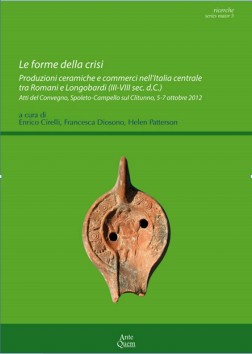 E. Boldrini, M. Cavalieri, P. De Idonè, B. Magni, G. Pace
E. Boldrini, M. Cavalieri, P. De Idonè, B. Magni, G. Pace
Aspetti della “transizione” nei contesti ceramici dal sito di Aiano-Torraccia di Chiusi (San Gimignano, Siena)
in E. Cirelli, F. Diosono, H. Patterson (ed.), Le forme della crisi. Produzioni ceramiche e commerci nell’Italia centrale tra Romani e Longobardi (III-VIII sec. d.C.), Atti del Convegno (Spoleto-Campello sul Clitunno, 5-7 Ottobre 2012), Collana “Ricerche” – Series Maior 5, ed. Ante Quem, Bologna 2015.
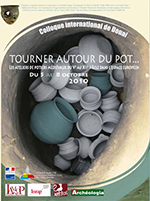 C. Bossu, L. Meulemans
C. Bossu, L. Meulemans
Les couvercles et plats-couvercles en céramique grossière toscane des VIe-VIIe siècles : production et critères fonctionnels d’emploi
in Actes du Colloque « Tourner autour du pot… Les ateliers de potiers médiévaux du Ve au XIIe siècle dans l’espace européen », F. Thuillier, É. Louis (ed.), Publications du CRAHAM, Presses universitaires de Caen, pp. 547-555.
PDF : 43_Bossu
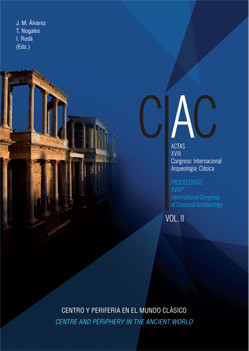 Late-antique Roman Villas in Central Italy. Compared Settlement Patterns: the Aiano-Torraccia di Chiusi Case in Proceedings of the XVIII International Congress of Classical Archaeology, vol. II, Merida, 2014, p. 1903-1906.
Late-antique Roman Villas in Central Italy. Compared Settlement Patterns: the Aiano-Torraccia di Chiusi Case in Proceedings of the XVIII International Congress of Classical Archaeology, vol. II, Merida, 2014, p. 1903-1906.
PDF : XVIII CIAC_S15-25
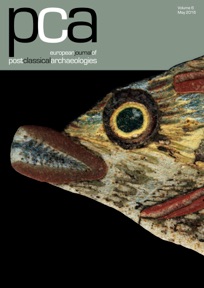 F.-D. Deltenre, L. Orlandi, «Rien ne se perd, rien ne se crée, tout se transforme». Transformation and manufacturing in the Late Roman villa of Aiano-Torraccia di Chiusi (5th-7th cent. AD) in PostclassicalArcheologies, 6, 2016, p. 71-90.
F.-D. Deltenre, L. Orlandi, «Rien ne se perd, rien ne se crée, tout se transforme». Transformation and manufacturing in the Late Roman villa of Aiano-Torraccia di Chiusi (5th-7th cent. AD) in PostclassicalArcheologies, 6, 2016, p. 71-90.
Cliquer pour voir le pdf : Deltenre-Orlandi-PCA6
Abstract: The Roman villa of Aiano-Torraccia di Chiusi (Siena) dates from the 4th c. AD and witness- es various phases of occupation up to the 7th-8th c. AD. During the 6th c. AD, the com- plex was deprived of a great part of its decoration, the elements of which were recycled in the productive process implanted inside the villa. This site appears to be not only a real “mine” of reusable material, but also a centre manufacturing metal objects, glass and gold, and probably also pottery. The aim of this paper is to present the workshops brought to light during eight excavation campaigns.
Riassunto: La villa romana di Aiano-Torraccia di Chiusi (Siena) si data al IV secolo d.C. e vive fasi di vita diverse fino al VII-VIII secolo. Nel corso del VI secolo, il complesso venne spogliato della decorazione architettonica, che venne riciclata nelle attività produttive impiantate al suo interno. Il sito appare non solo come “miniera” di materiali riciclabili, ma anche come centro di officine artigianali che lavorano metalli e vetro, e probabilmente anche ceramica. Questo contributo presenta gli impianti e le attività produttive portati in luce durante gli otto anni di scavo.